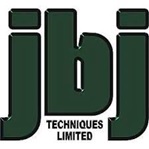
What do hydraulic gear motors do?
Gear motors convert hydraulic pressure and flow into torque and angular displacement, rotary mechanical power, applied to a load via the shaft. Hydraulic fluid is moved into the motor causing the matched gear set to rotate. One of the gears is connected to the motor output shaft so producing the rotary mechanical power.
Hydraulic gear motors can be supplied in single or bi-rotational formats and units are available with a comprehensive range of mounting flange and shaft options including specific designs to accommodate high radial loads.
A complete range of integrated relief valves and anti-cavitation valves to suit a wide range of applications are available as standard.
A variety of materials used within the construction process ensure suitability for a wide range of fluids and environments.
A special shaft seal to allow hydraulic gear motors to bear extreme over-pressures without damage or failure.
Please visit https://www.jbj.co.uk/gear-motors.html for











Radio wave weapon knocks out drone swarms
Probably. A radio-controlled drone cannot be completely shielded to RF, else you´d lose the ability to control it. The fibre optical cable removes...